
The cover for the Parisian Francis-Day sheet music doesn’t sparkle with happiness and joy. It rather illustrates the miserable yearning in the song’s lyrics.
You left me sad and lonely
Why did you leave me lonely?
For here’s a heart that’s only
For nobody but you!
Walter Donaldson probably didn’t have exquisite poetry in mind when he wrote these verses. But happily he transformed the persistent melody in his brain into the song You’re Driving Me Crazy that became an instant hit in 1930. Later, any jazz singer or crooner —from Billie Holiday to Frank Sinatra— had to have that song in their repertoire.
I’m burning like a flame, dear
Oh, I’ll never be the same, dear
I’ll always place the blame, dear
On nobody but you.
Not familiar with the tune? As a reminder, here is the delicious, sexy version by Betty Boop in the cartoon Silly Scandals:
Another copy of the sheet music in our collection, is most likely the original American one. Frederick Manning designed a large passionate hart, blazing in a fire of love. Somewhat pompous in my opinion.
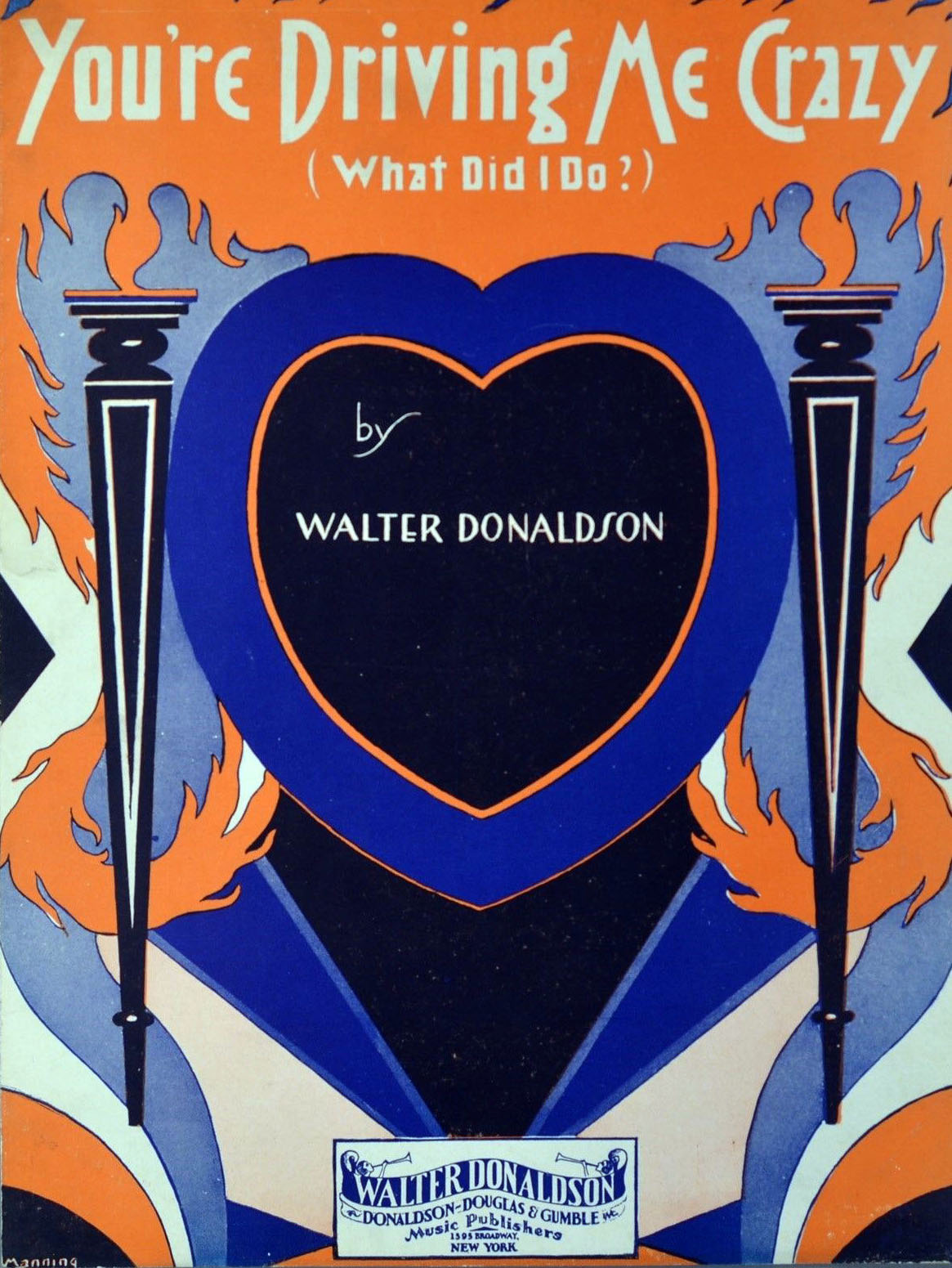
Yes, you,
You’re driving me crazy!
What did I do? What did I do?
My tears for you
Make everything hazy,
Clouding the skies of blue.
For the Francis-Day cover at the top, illustrator Florent Margaritis chose another approach. He took the title and lyrics quite literally and drew a couple: she regretful but displaying resolve, he apparently thinking What did I do? They share their romantic agony on a cloudy bumper ride in a weird electric car of the type that I’ve never seen before. My perfect excuse to start digging into the history of the bumper cars or dodgems.
The New Yorker, James Adair, was the first to receive a patent for an electrically propelled vehicle in 1890. His patent drawing shows a tricycle connected to the ceiling by a trolley pole. This idea, which was never built, became the basic concept to build the first bumper cars thirty years later: a conductive (metal) floor and ceiling, each with a separate power polarity. Contacts under the vehicle touch the floor while a pole-mounted contact touches the ceiling, forming a complete circuit. I remember my childhood fairs, looking fascinated and thrilled at the sparks produced by the car’s poles grating the ceiling’s wire mesh. Electricity was literally in the air.
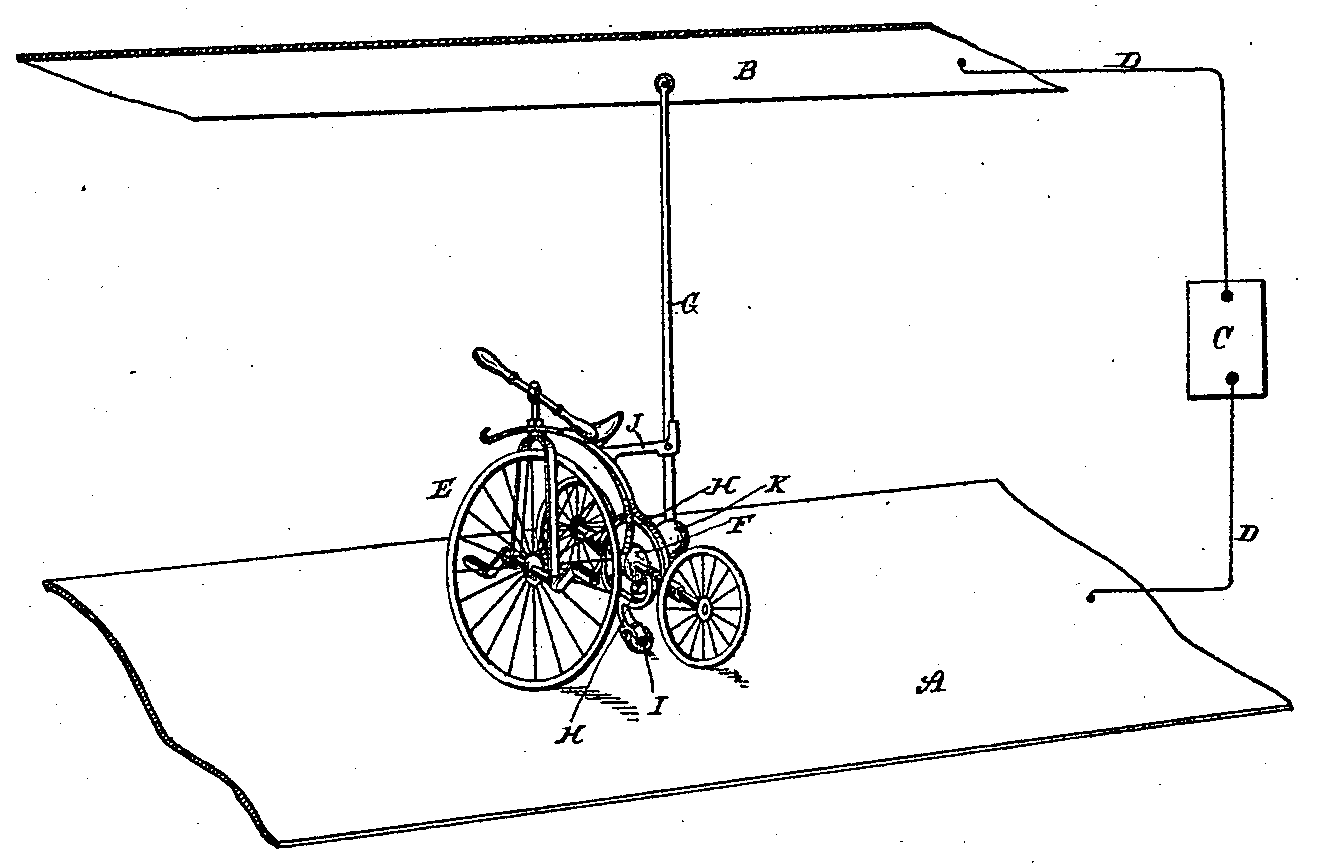
The first patent for an electrically powered bumper car was issued in 1921 to father and son Stoehrer from Massachusetts. They had invented a novel amusement car that “in the hands of an unskilled operator will follow a promiscuous, irregular path to not only produce various sensations but to collide with other cars as well as with portions of the platform provided for that purpose. It requires the utmost skill of the driver to cause the car or vehicle to dodge other vehicles.” Hence the name of the company that the brothers created: Dodgem. Dodgem is also the generic name for what they call in the US a bumper car, in France auto-tamponneuse and in Belgium auto-scooter.
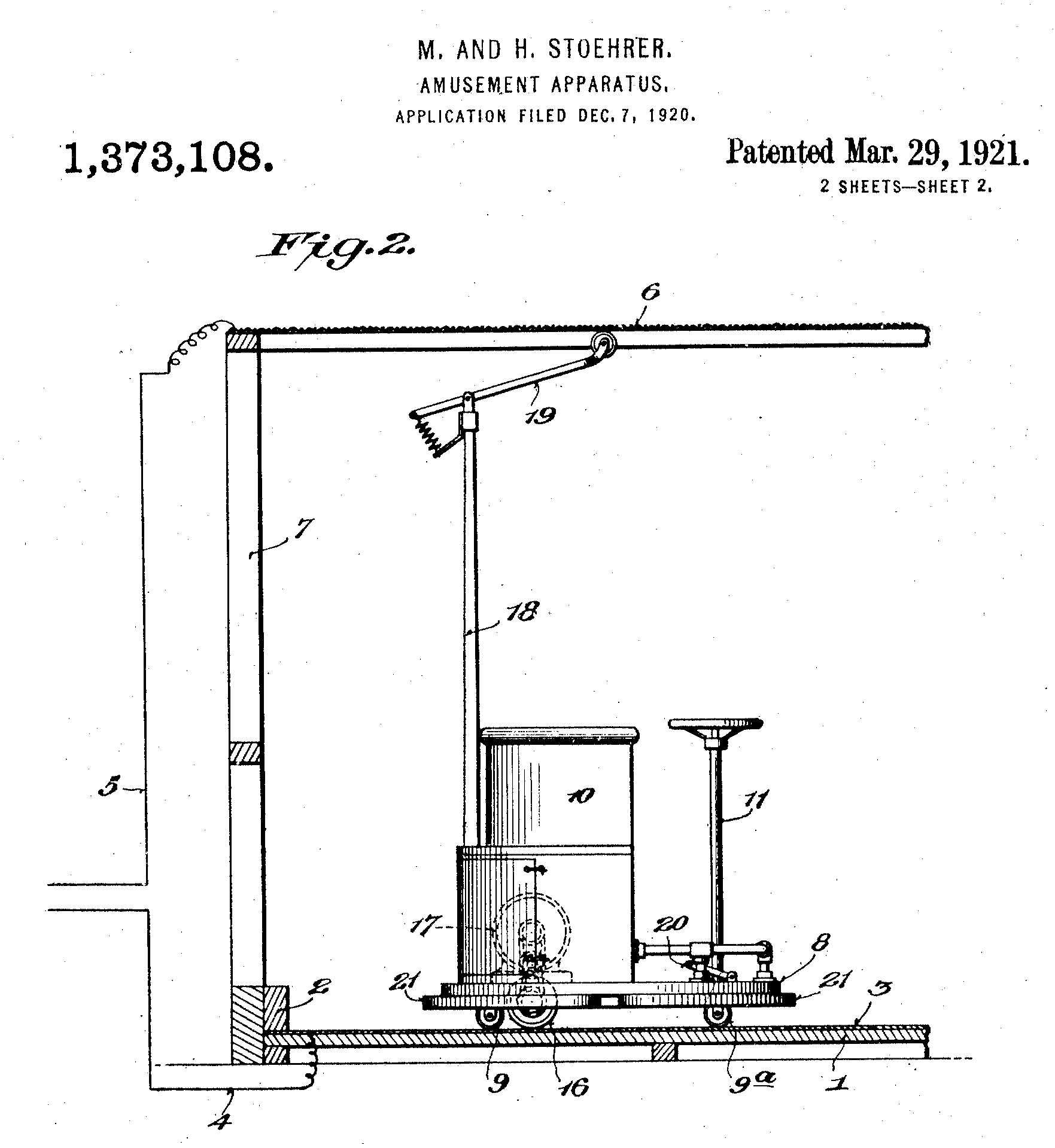 Similar to the bumper car illustrated by Margaritis on our cover, the first Dodgem cars were round and seated two people. Between and in front of them a horizontal steering wheel was mounted on a vertical post.
Similar to the bumper car illustrated by Margaritis on our cover, the first Dodgem cars were round and seated two people. Between and in front of them a horizontal steering wheel was mounted on a vertical post.
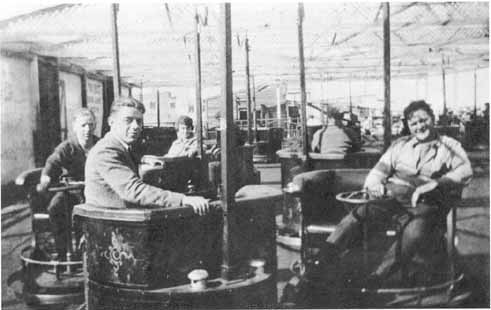
These cars equipped with large bumpers indeed drove crazy because they were rear-steered. According to a test in 1921 by Scientific American these first bumper cars were highly unmanageable and only allowed erratic steering.
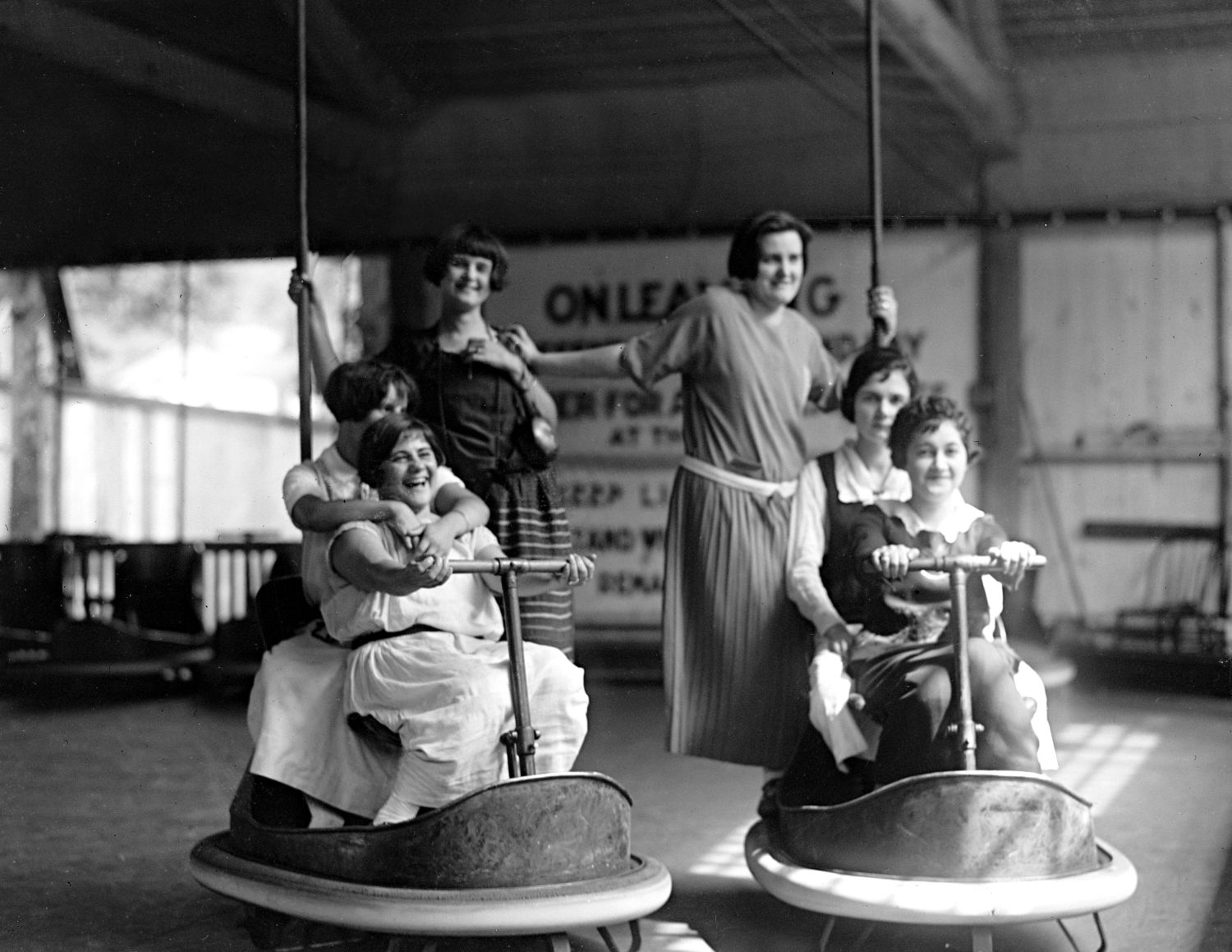
Lusse Brothers from Philadelphia spent nine years solving the unsteady steering problems that plagued Dodgem cars. By the 1930s, new front-wheel drive bumper cars were introduced: the Lusse Auto Skooter. They could easily reverse backward and the drivers could now target who they wanted to collide with.
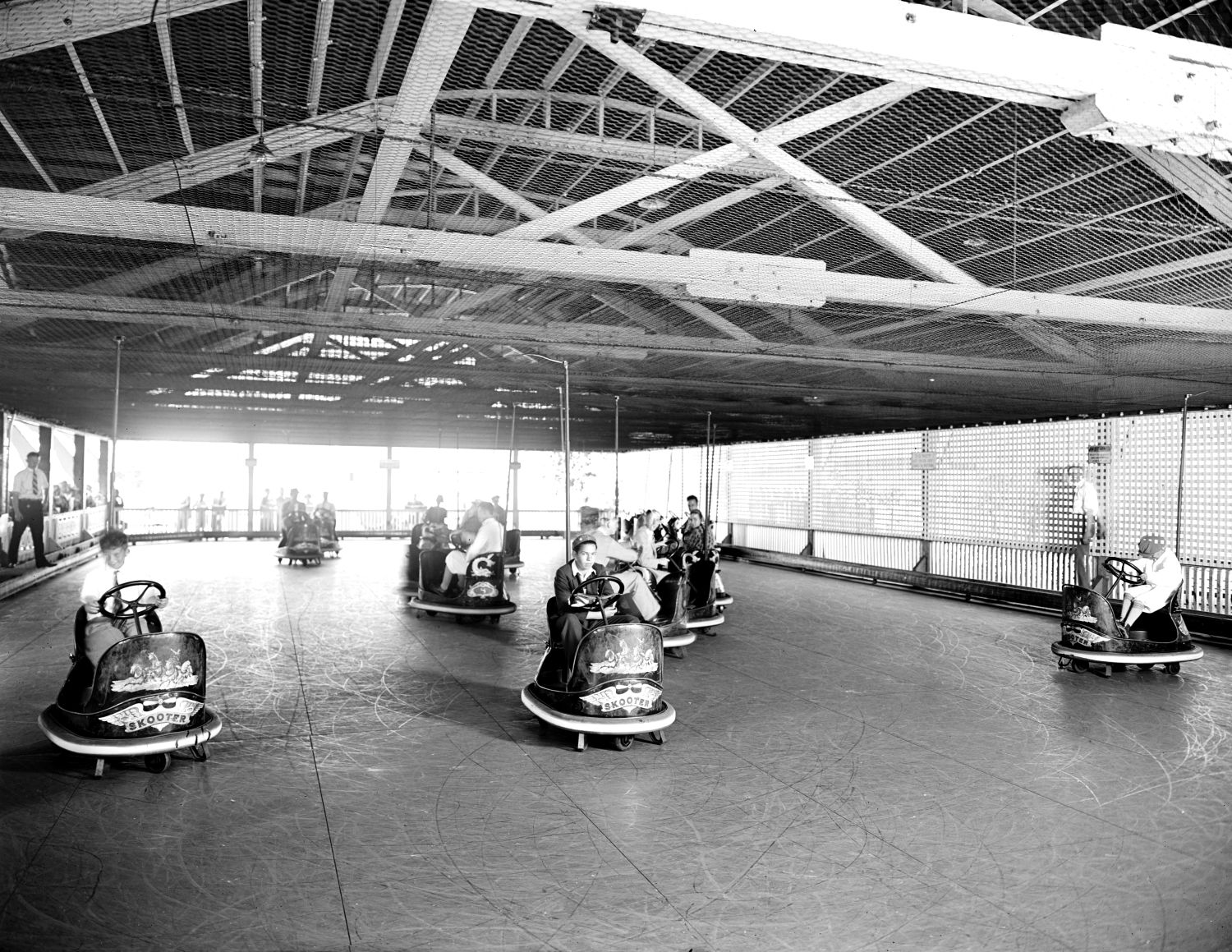
In France electrically powered bumper cars were not produced before the 1930s. But I found two pictures from primitive precursors. Both show auto-tamponeuses that look like a wicked or wooden seat attached to a thick board on wheels. In front there is a crude steering wheel. I imagine that the fair attraction’s track was slanted so that the cars glided or rolled down from their own. The first photograph was taken around 1900 at the Neuilly Fair near Paris. The second one shows us Battling Siki, a French-Senegalese boxer sitting in a bumper car at a Parisian Lunapark in 1922.
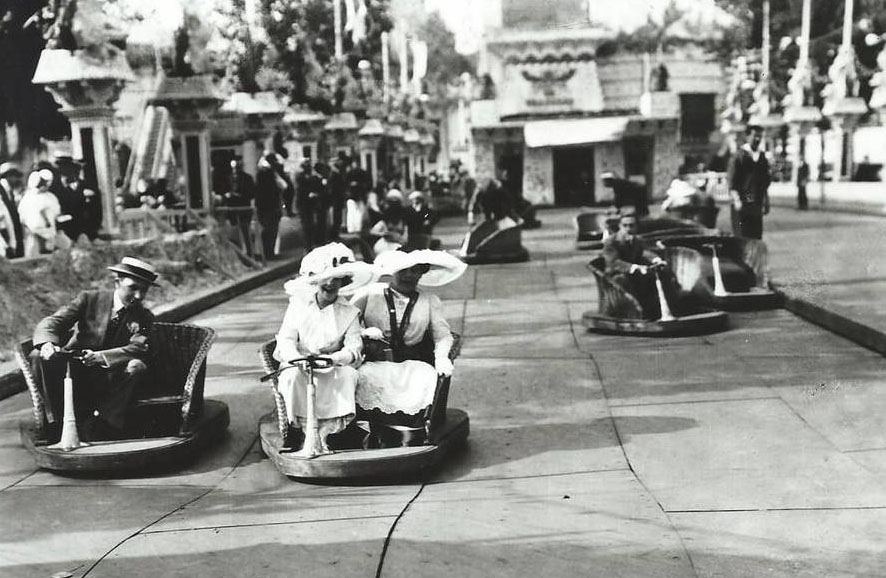
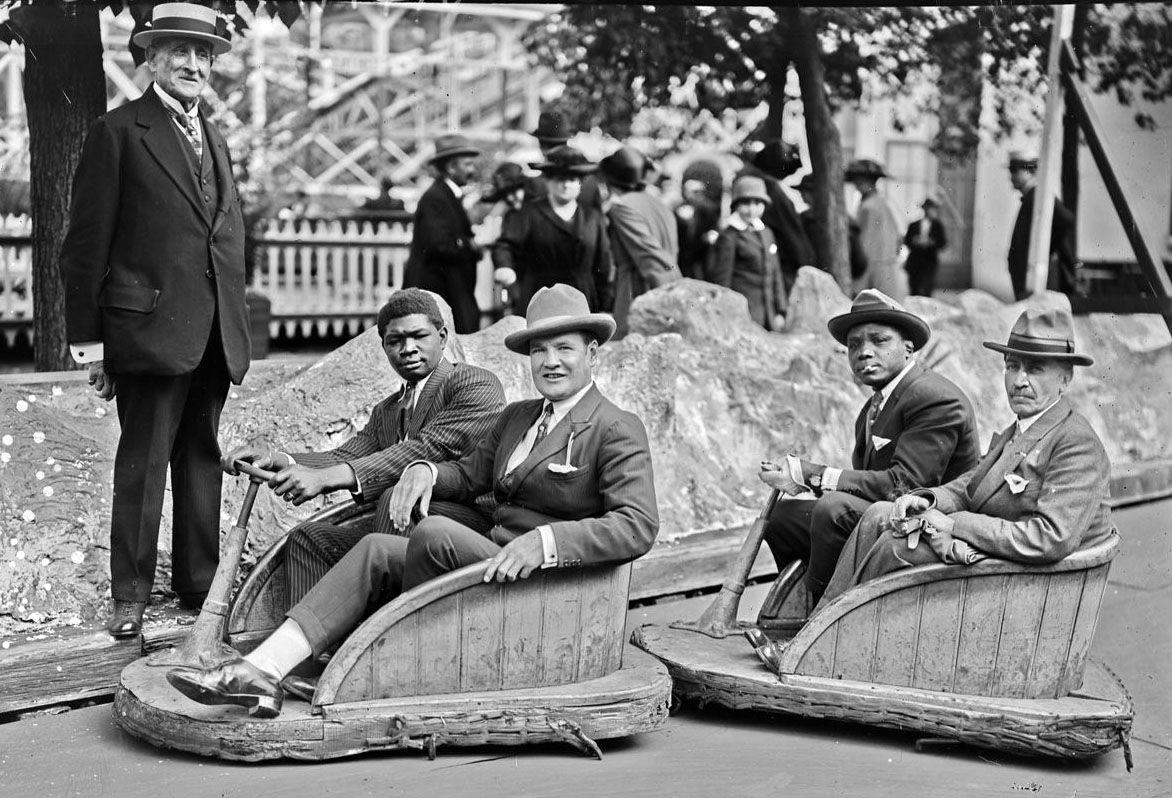
Another forerunner of the bumper cars was one of the most popular attractions at the 1924 British Empire Exhibition in London. I confess that I haven’t the faintest idea how this entertainment device works…

What a coincidence. The fun fair is in town. Really, they are. I went to the autoscooter stand, to check some of the above facts. And guess what, they are still playing our tune ❤️
Yes, you!
You’re driving me crazy!
What did I do to you?
